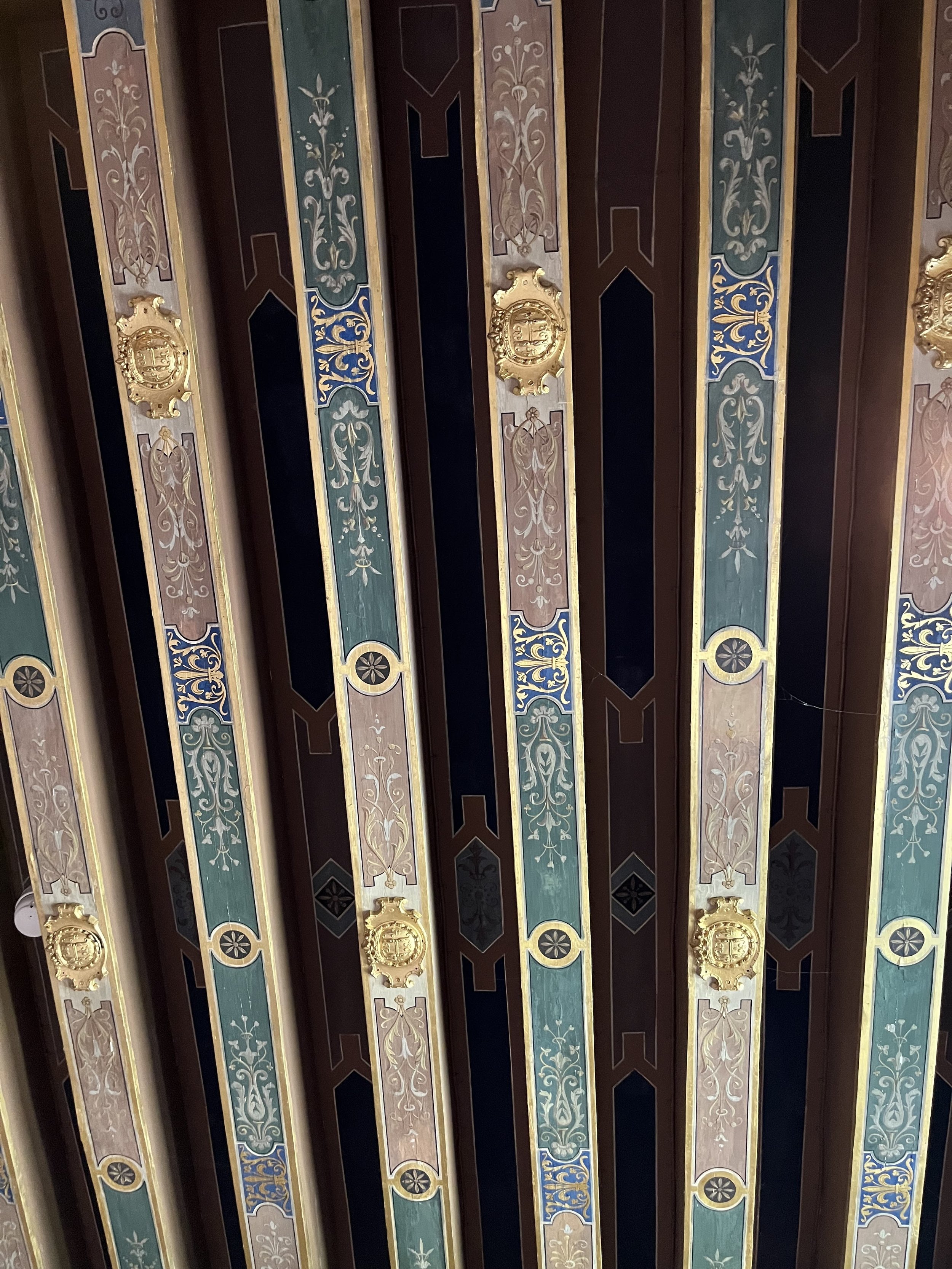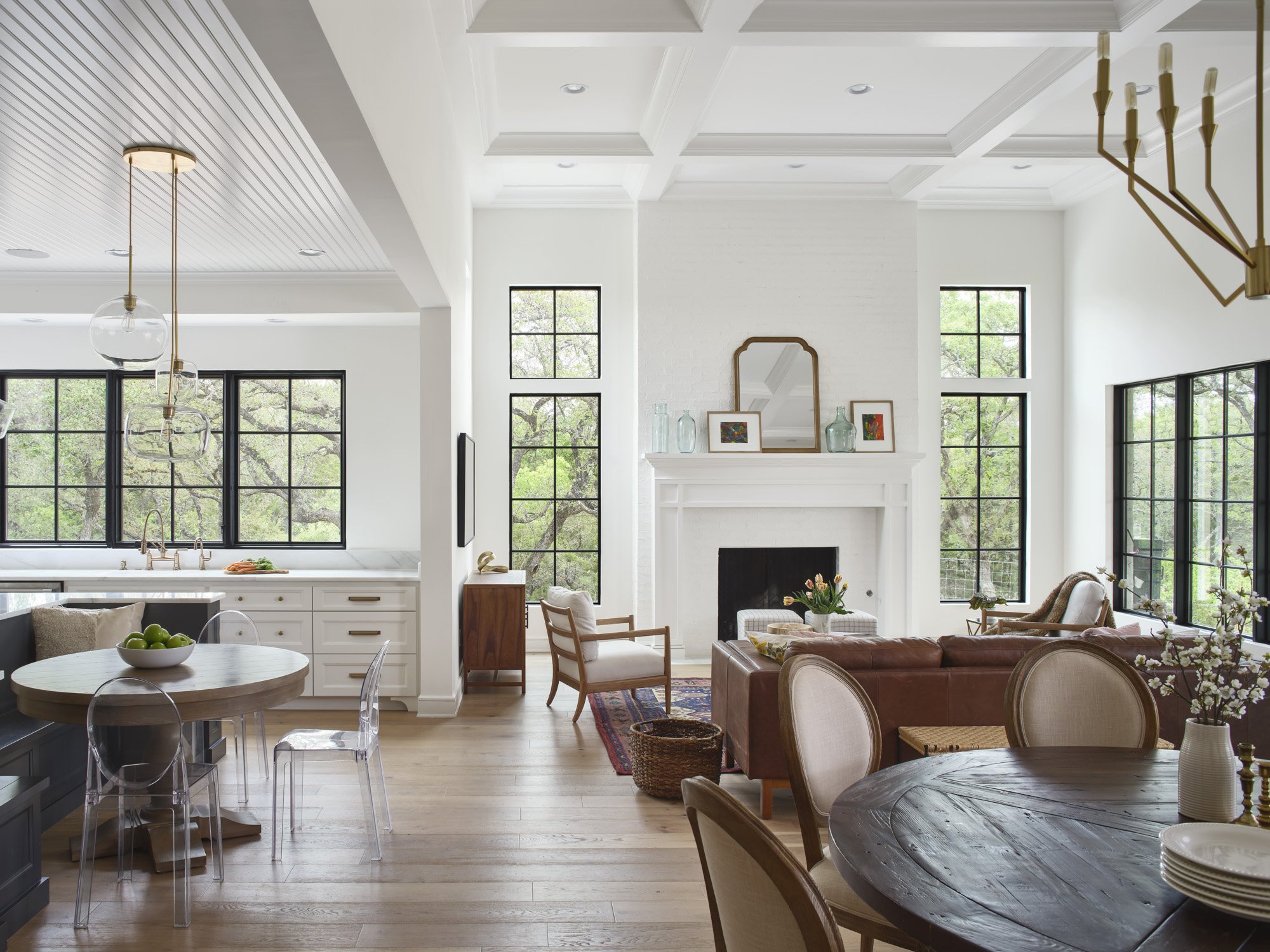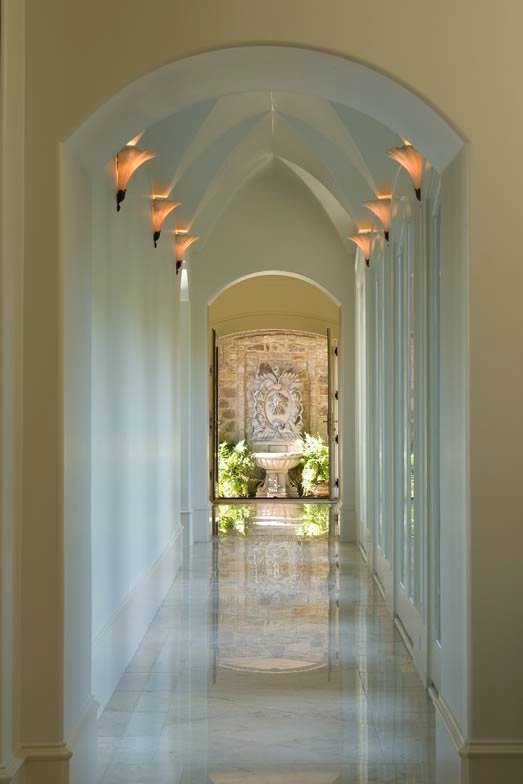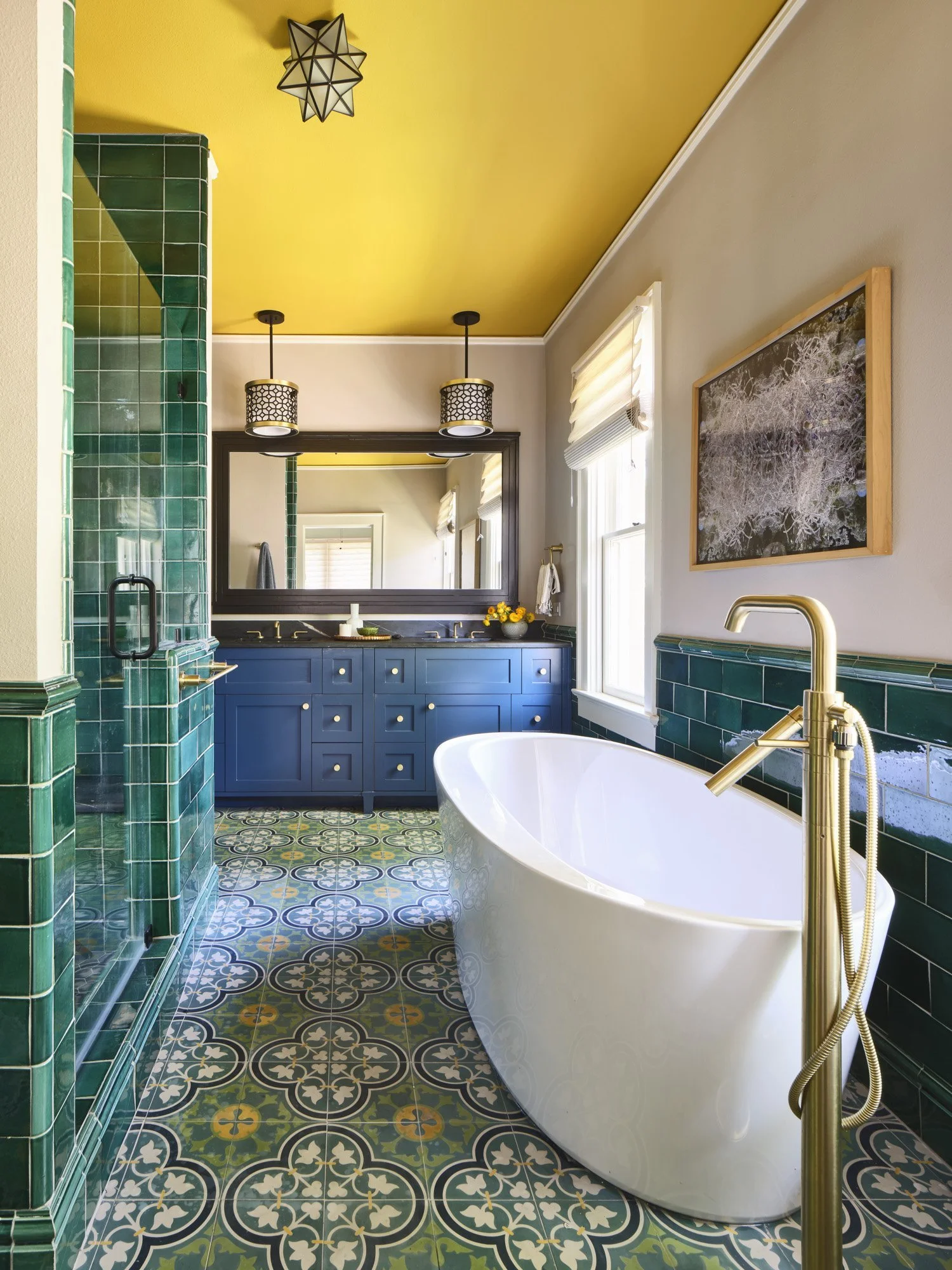8 Types of Decorative Ceilings
Our Austin Architects Share 8 Types of Decorative Ceilings Inspired by French Architecture
Dianne Kett, Founder & Principal Architect of our Austin architecture firm, recently returned from her summer vacation to France, where she explored centuries-old buildings and picked up some architectural design inspiration along the way. She toured numerous sites with ornate decorative ceilings. While many of these old-world designs are impossible to re-create today, we can take a bit of inspiration from these French architectural marvels to bring character into our residential new builds and renovation projects here in Austin, Texas. Let’s take a look at eight types of decorative ceilings inspired by French designs Dianne saw on her trip.
Looking to Old-world French Architecture for Design Inspiration
France is known for its Gothic, Baroque, and Art Nouveau architecture. These ornate styles required expert craftsmanship, massive budgets, and decades to build. Buildings like these are impossible to replicate today. However, we can take the basic forms to reinterpret a modern version of these decorative ceilings for current building practices and lifestyles.
8 Types of Decorative Ceilings
Here are eight types of decorative ceilings that will add old-world charm and character to your modern space.
1. Beamed
Beamed ceilings feature rows of exposed beams, adding visual architectural interest to the space. In historic homes, these beams are often structural components. However, you can re-create this charming look in any room with faux beams. Incorporating beams into the design can elongate the room to make it feel larger, hide other architectural components, and create a cozy feel. Consider the ceiling height when retrofitting faux beams into a room, as they can lower the visual height and make a room feel shorter.
2. Coffered
Coffered ceilings comprise a series of shallow perimeter and cross beams trimmed in moldings that form sunken panels or coffers. Traditionally, coffers are square or rectangular, but they can be customized to make any geometric shape or pattern. The recessed panel is often accented in a contrasting color to heighten the effect. Coffered ceilings create an elegant feel, perfect for formal living and dining spaces. They even grace the ceilings of the Palace of Versailles!
3. Vaulted
Vaulted ceilings are self-supported structures that rise above the walls and sit below the roofline to increase the vertical area of the room. There are many variations of vaulted ceilings, which can either follow the home's roofline or create a new shape. Types of vaulted ceilings include cathedral and single-sloped, which follow the roofline’s slope, and barrel and groin vaulted, which form an independent arch. Vaulted ceilings can significantly impact a room's overall look and feel, making it appear larger, brighter, and more open.
4. Barrel Vaulted
Barrel vaulted ceilings are curved ceilings that mimic the inside of a barrel. The tunnel-like shape is perfect for accentuating long hallways and also makes for a dramatic impact in larger living spaces. In historic buildings, barrel ceilings were often made of brick or stone. However, the form can be emulated today with sheetrock or plaster finishes. Our Austin architects are currently working on a variation of a barrel vaulted ceiling, where the curved edges on either side meet at a single flat plane in the middle.
5. Groin Vaulted
Groin vaulted ceilings are formed by the intersection of two barrel vaults coming together at right angles. These types of ceilings are commonly associated with Gothic cathedrals. While the sweeping hand-carved stone ceilings of old-world cathedrals could never be re-created today, the groin vault shape can still be applied in modern homes. Groin vaulted ceilings make for dramatic entryways, and our Austin architecture firm even designed one to create a regal hallway in a client’s home.
6. Wood Paneled
Wood paneled ceilings are simply clad in wood for a decorative effect. They are versatile and work within many architectural design styles depending on the finishes and materials used. For example, tongue and groove can take on a traditional French cottage feel, shiplap adds rustic charm, and beadboard creates a coastal look. Numerous stain and paint options for wood paneling allow for limitless design potential. Overall, wood-paneled ceilings add visual warmth while enhancing the space's acoustic qualities.
7. Trimmed
Trimmed ceilings are outfitted with decorative trim work to create visual interest and a traditional, classic look. Trim options include light fixture plates, onlays, scrolls, rosettes, medallions, and lattices. The creative possibilities are endless, from streamlined geometric options to regal designs. A trimmed ceiling is a bold statement, so go into the application with a solid design plan mapped out.
8. Painted
A painted ceiling may seem simple, but paint options go far beyond the simple shades of white. Painting the ceiling with a bold color draws the eye upwards and creates visual contrast and interest within the room. Additionally, you can even add stenciling to the ceiling to mimic some of the French motifs Dianne came across in her travels. Make sure the color you select coordinates with all the finishes in the space for a cohesive design.
Looking Up to Decorative Ceiling Ideas
Take your home design all the way up to the ceiling! While we can’t re-create exact replicas of these historic French ceiling designs, we can take inspiration from these spaces and find ways to interpret the look in modern applications.
Planning a decorative ceiling design for your home can add visual interest and character to the space. Consider your home’s overall architectural style and look to past examples from historic properties for ideas. If you need help, contact our team of Austin architects, who can guide you through the architectural design process.








